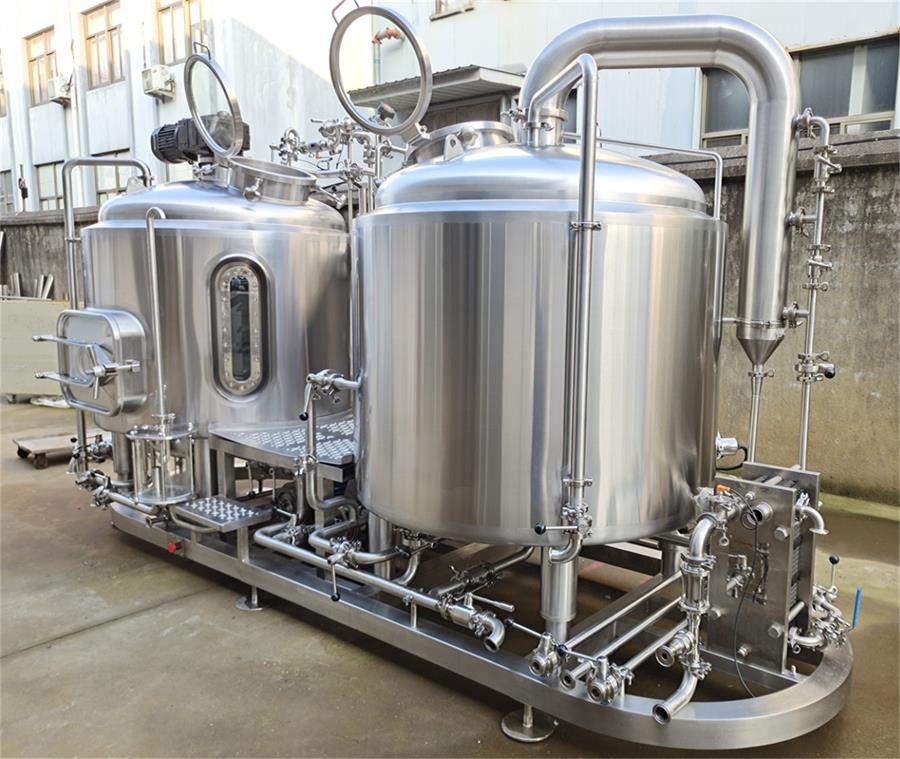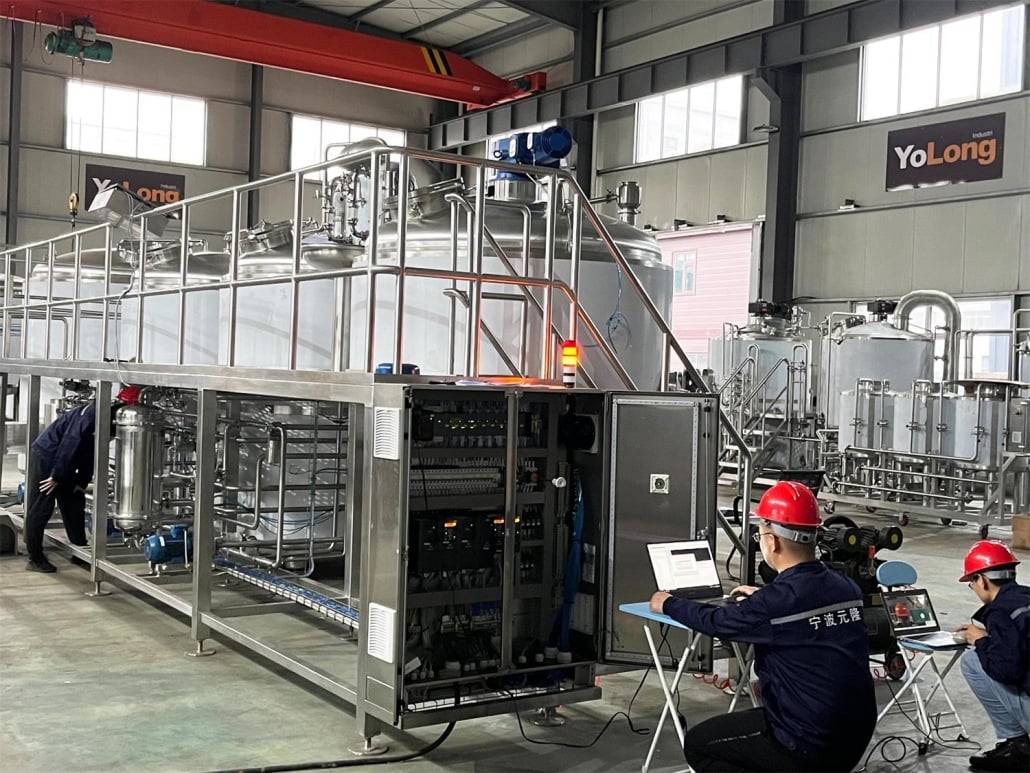Starting a Microbrewery
Introduction: The Rise of Microbreweries
In recent years, microbreweries have become a significant trend in the beverage industry. Small-scale and independently owned, these breweries offer unique flavors and a personal touch that mass-produced beers can’t match. If you’ve ever dreamed of turning your passion for brewing into a business, you’re in the right place. This guide will walk you through everything you need to know about starting a microbrewery.
Overview: Key Details of Starting a Microbrewery
Starting a microbrewery involves a mix of passion, technical know-how, and business acumen. From obtaining licenses to choosing the right equipment, every step is crucial to your success. Let’s dive into the essentials.
Essential Brewing Equipment
To brew high-quality beer, you’ll need a variety of equipment. Here’s a detailed look at what you’ll need:
- Mash Tun: Where the mashing process occurs.
- Brew Kettle: For boiling the wort.
- Fermenters: Vessels where fermentation takes place.
- Cooling System: To cool the wort quickly.
- Brite Tank: For secondary fermentation and carbonation.
- Kegging and Bottling Equipment: For packaging your beer.

Types of Equipment Needed
| Equipment Type | Purpose | Key Features |
|---|---|---|
| Mash Tun | Mashing grains to extract fermentable sugars | Insulated, with false bottom |
| Brew Kettle | Boiling wort | Stainless steel, with heating source |
| Fermenters | Fermentation process | Airtight, with airlock |
| Cooling System | Cooling wort | Efficient heat exchanger |
| Brite Tank | Secondary fermentation and carbonation | Pressurizable, with cooling jacket |
| Kegging Equipment | Storing and dispensing beer | Stainless steel kegs, CO2 system |
| Bottling Equipment | Packaging beer in bottles | Bottle filler, capper |
The Brewing Process: From Grain to Glass
Brewing beer is both an art and a science. Here’s a step-by-step guide to the brewing process:
- Mashing: Mix milled grains with hot water to convert starches to sugars.
- Lautering: Separate the liquid wort from the grain husks.
- Boiling: Boil the wort and add hops for bitterness and flavor.
- Cooling: Quickly cool the wort to fermentation temperature.
- Fermentation: Add yeast to the cooled wort and ferment.
- Conditioning: Age the beer to develop flavors.
- Packaging: Keg or bottle the finished beer.
Capacity, Space, Design, and Layout
| Parameter | Details | Considerations |
|---|---|---|
| Capacity | Size of your brewing system (barrels per batch) | Start small, scale up as demand grows |
| Space Requirements | Space needed for equipment and operations | Plan for storage, brewing, and serving areas |
| Design | Layout and flow of the brewing process | Efficient workflow, easy cleaning |
| Customization | Tailor equipment to specific needs | Flexible systems for various beer styles |
Suppliers and Price Range
Choosing the right suppliers is crucial for obtaining quality equipment at a reasonable price.
| Equipment | Price Range |
|---|---|
| Mash Tun | $1,000 – $5,000 |
| Brew Kettle | $2,000 – $10,000 |
| Fermenters | $1,500 – $8,000 |
| Cooling System | $800 – $3,000 |
| Brite Tank | $2,000 – $7,000 |
| Kegging Equipment | $1,000 – $4,000 |
| Bottling Equipment | $1,000 – $5,000 |
Installation, Operation, and Maintenance
| Aspect | Details | Considerations |
|---|---|---|
| Installation | Setting up the equipment | Professional installation recommended |
| Operation | Running the brewing process | Staff training and process optimization |
| Maintenance | Regular upkeep and repairs | Scheduled maintenance and spare parts |
Choosing the Right Supplier
Selecting the right supplier is key to getting quality equipment and good support.
| Criteria | Details | Considerations |
|---|---|---|
| Quality | Build quality and durability | Stainless steel, reputable brands |
| Support | Technical support and service | Availability of spare parts, customer service |
| Price | Cost of equipment | Compare prices, check for hidden costs |
| Reviews | Feedback from other brewers | Peer recommendations, online reviews |
Comparing Pros and Cons
| Aspect | Advantages | Limitations |
|---|---|---|
| Mash Tun | Efficient mashing, easy cleaning | Initial cost, space requirement |
| Brew Kettle | High-quality boiling, durability | Requires good ventilation |
| Fermenters | Controlled fermentation, airtight | Regular cleaning needed |
| Cooling System | Fast cooling, prevents contamination | Initial investment, maintenance |
| Brite Tank | Improved carbonation, secondary fermentation | Space requirement, cost |
| Kegging Equipment | Easy dispensing, preserves freshness | Higher upfront cost, CO2 management |
| Bottling Equipment | Convenient packaging, long shelf life | Time-consuming, space for bottles |
Advantages of Starting a Microbrewery
Starting a microbrewery comes with several benefits:
- Creativity: Experiment with different flavors and styles.
- Community Engagement: Build a local following and create a community hub.
- Profit Potential: High margins on craft beer sales.
- Passion: Turn your hobby into a profitable business.
- Sustainability: Opportunities for eco-friendly practices.
Challenges of Starting a Microbrewery
However, there are also challenges to consider:
- Regulations: Navigating the complex legal requirements.
- Investment: High initial costs for equipment and setup.
- Competition: Standing out in a crowded market.
- Consistency: Maintaining quality across batches.
- Operational Demands: Long hours and hands-on management.
Getting Started: Steps to Launch Your Microbrewery
Research and Planning
Before diving in, conduct thorough research. Understand the market, identify your target audience, and develop a business plan.
Legal Requirements
Navigating the legal landscape is crucial. You’ll need to:
- Obtain necessary licenses and permits.
- Comply with local zoning laws.
- Adhere to health and safety regulations.
Funding Your Microbrewery
Starting a microbrewery requires substantial capital. Consider these funding options:
- Personal Savings: Using your own funds.
- Loans: Business loans from banks or credit unions.
- Investors: Attracting private investors.
- Crowdfunding: Raising funds through platforms like Kickstarter.
Finding the Right Location
The location of your microbrewery can significantly impact your success. Look for a place with:
- High foot traffic.
- Adequate space for brewing and serving.
- Accessibility for deliveries and customers.
Marketing Your Microbrewery
Effective marketing can help you build a loyal customer base. Consider these strategies:
- Social Media: Engage with customers on platforms like Instagram and Facebook.
- Local Events: Participate in or host local events and festivals.
- Collaborations: Partner with local businesses for cross-promotions.
- Word of Mouth: Encourage satisfied customers to spread the word.

FAQ
| Question | Answer |
|---|---|
| How much does it cost to start a microbrewery? | Initial costs can range from $250,000 to over $1 million, depending on the size and scope of your brewery. |
| What are the main legal requirements for starting a microbrewery? | You’ll need to obtain federal, state, and local licenses, adhere to zoning laws, and comply with health and safety regulations. |
| How long does it take to start a microbrewery? | It typically takes 12-24 months to go from planning to opening, depending on various factors like location, funding, and regulatory approvals. |
| What are the main challenges of running a microbrewery? | Challenges include regulatory compliance, maintaining consistent quality, managing costs, and standing out in a competitive market. |
| How can I market my microbrewery effectively? | Use social media, engage in local events, collaborate with local businesses, and rely on word-of-mouth marketing. |
Conclusion
Starting a microbrewery is a challenging but rewarding venture. With the right planning, equipment, and passion, you can create a successful business that brings joy to your community and satisfies your creative ambitions. Remember, the journey from grain to glass is as important as the final product. Cheers to your brewing success!
Share this entry
Interested in learning more about Brewing Systems including additional details and pricing information? Please use the form below to contact us!
YOLONG BREWERY EQUIPMENT FAQS
- Commercial Brewery / Craft Brewery / Microbrewery / Nanobrewery
- What is The Difference Between Craft Beer and Industrial Beer?
- The Bespoke Differences In Custom Brewing Systems
- Everything You Need to Know About Kettle Souring
- How to Choose Brewing Equipment for Your business?
- How To Choose The-Best Partner To Build Your Commercial Microbrewing System?
- Two Detection Sensors That You Need To Use In Your Brewhouse System
- Remote Control Applications in Brewing Equipment/How does it work?
- How To Clean Your Brand New Brewery Tanks?

